Content Marketing is a sought-after medium in which podcasts give you the opportunity to reach your target audience in a personal way. But how can you ensure that your podcast has the desired reach and is heard by the right people? The answer lies in podcast analytics. In this guide, I will show you how to use the analytics of your podcast platform, in this case anchor.fm, to improve your performance and better understand your audience.
Key Findings
- Overview of the podcast platform and available statistics.
- The significance of the audience and their behavior.
- Geographical data on the target audience.
- The importance of broad distribution on various platforms.
- Using analytics to improve content.
Step-by-Step Guide
Step 1: Accessing the Dashboard
To view your podcast analytics, you first need to log in to your podcast platform. Visit the anchor.fm dashboard. Here, you will get a comprehensive overview of your profile and your podcasts.
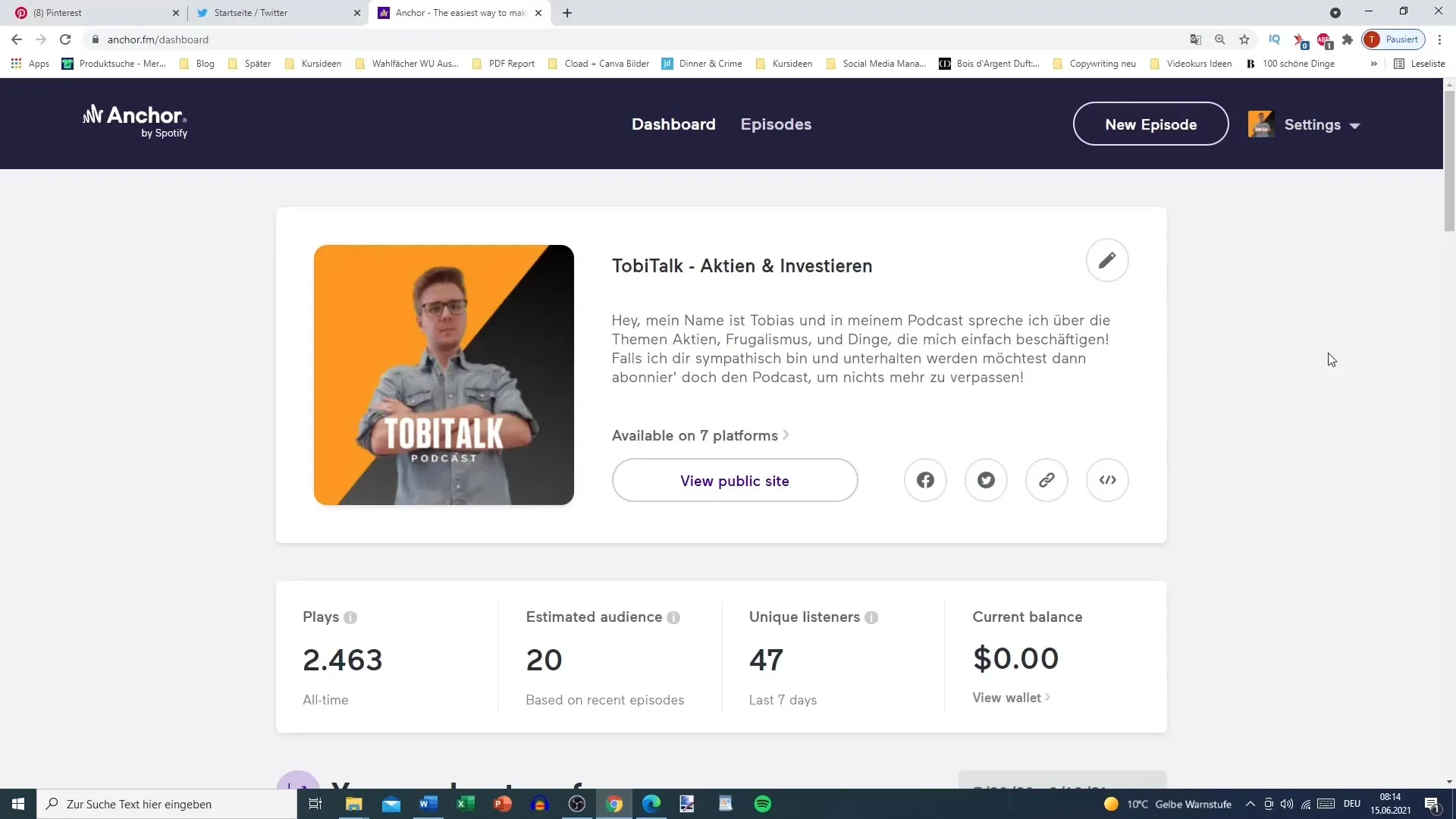
Step 2: Explore Profile Overview
Your dashboard displays important information such as your profile picture, name, link to your RSS feed, and the platforms where your podcast is available. Click on "Available Platforms" to see where your podcast is published. Here you can also copy links to share.
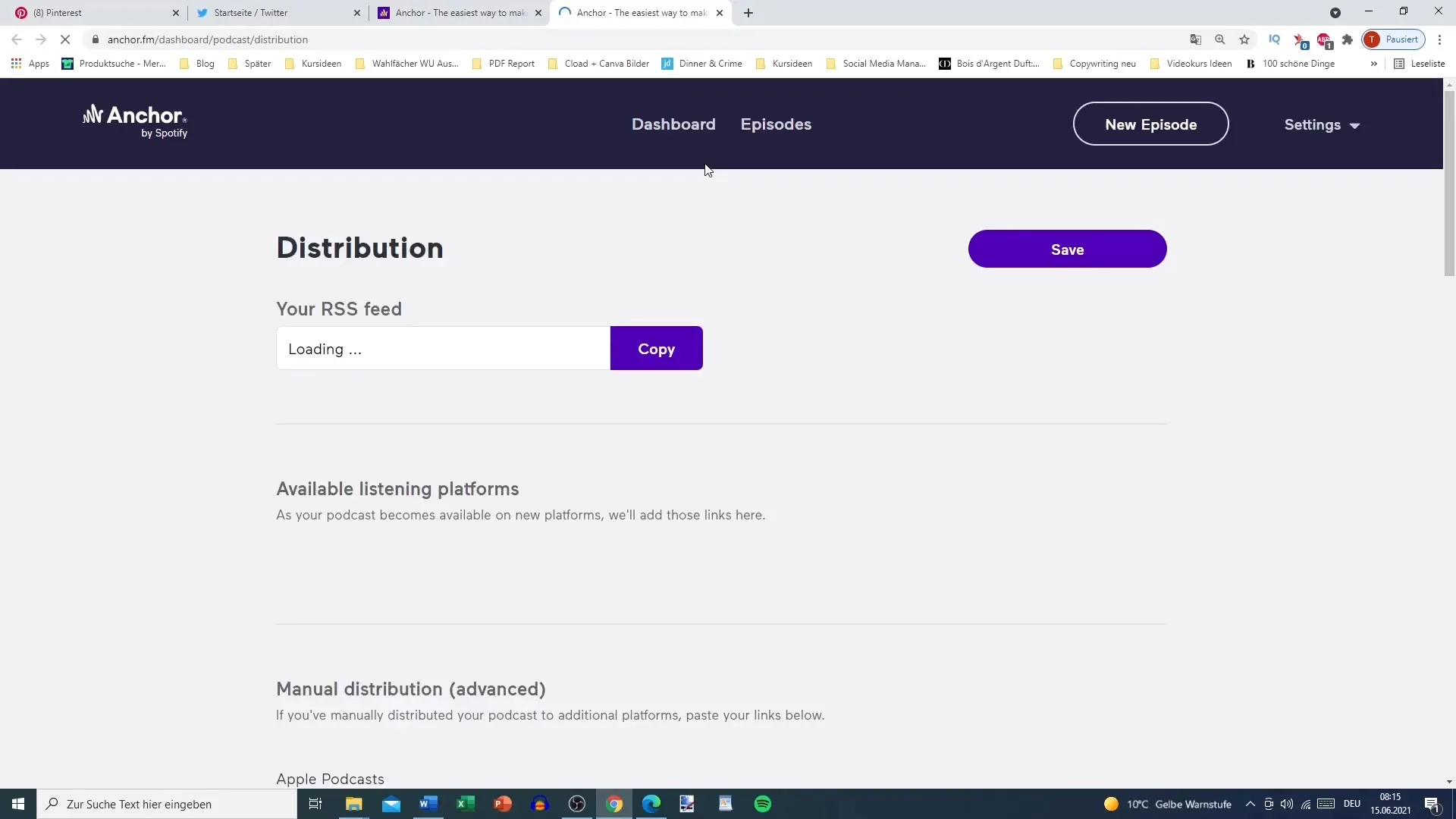
Step 3: Analyzing Total Plays and Audience
In the dashboard, you will find the total number of plays since the launch of your podcast. Particularly important is the estimated audience, which tracks how many listeners regularly listen to your episodes. Click on the different statistics to get a detailed overview of your unique listeners and their behavior in the past seven days.
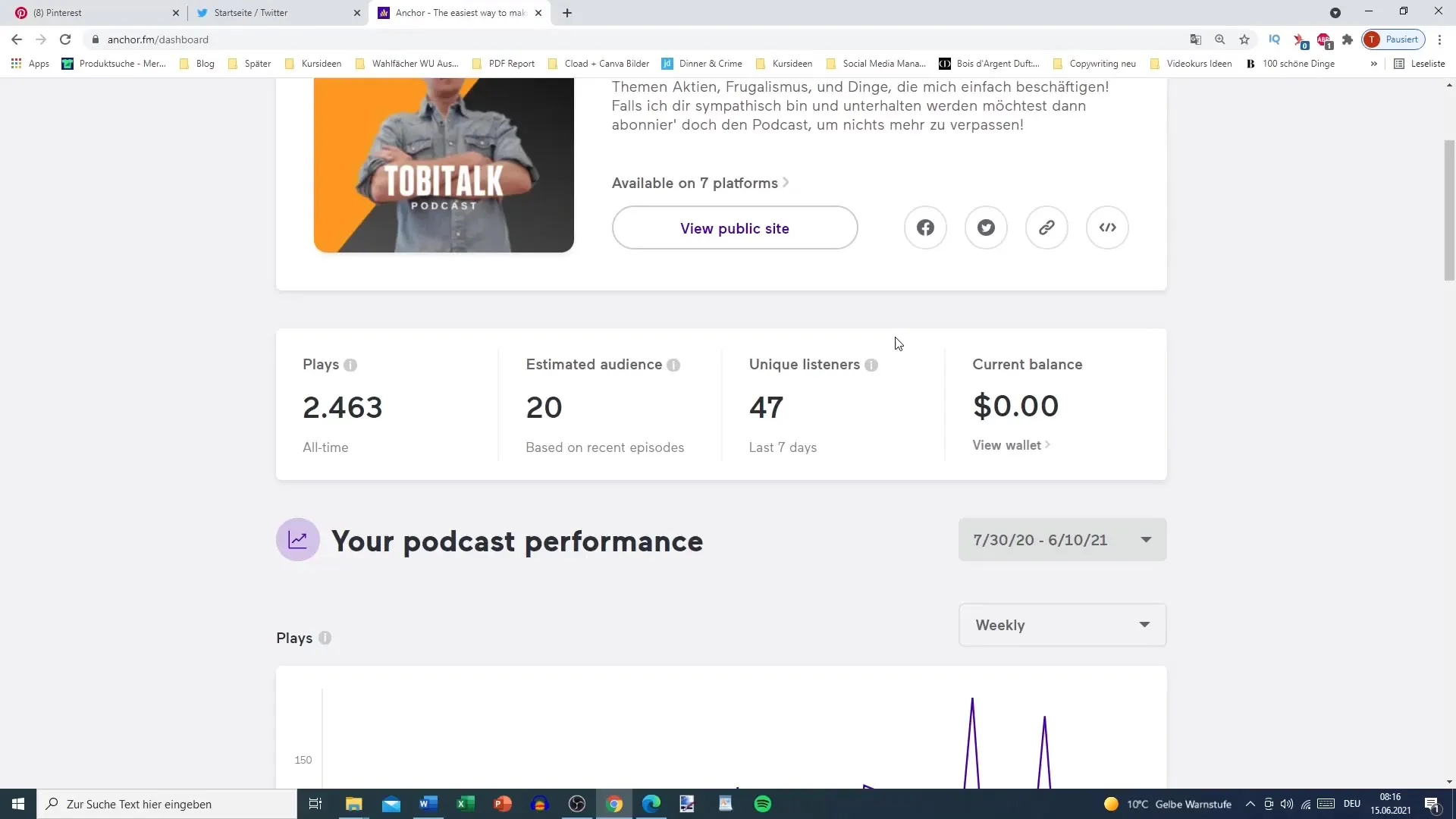
Step 4: Viewing Compensation Information
If you earn money from advertising, your current compensation and balances will be displayed in the dashboard. Currently, there are no ads active, which means there is still potential for you to increase your income if you decide to incorporate advertising.
Step 5: Analyzing Podcast Performance Over a Specific Period
You can analyze your podcast's performance for set time periods, such as the last 30 days. Click on "Daily" to see how many plays your episodes received on specific days. This helps you identify trends.
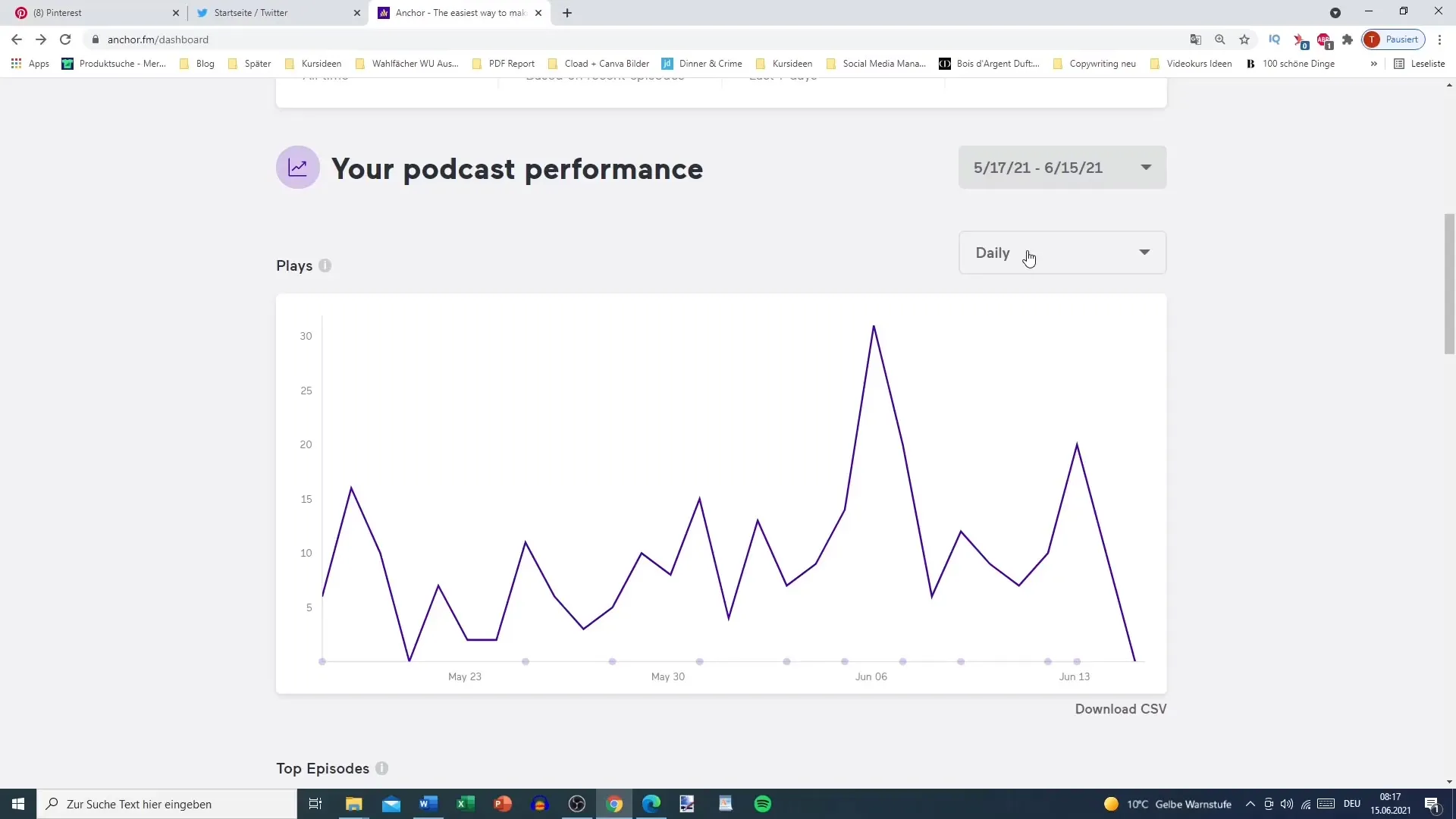
Step 6: Identifying Top Episodes
In your analytics overview, you can also see the most played episodes. This will help you understand which topics resonate best with your target audience. This enables you to tailor future content accordingly.
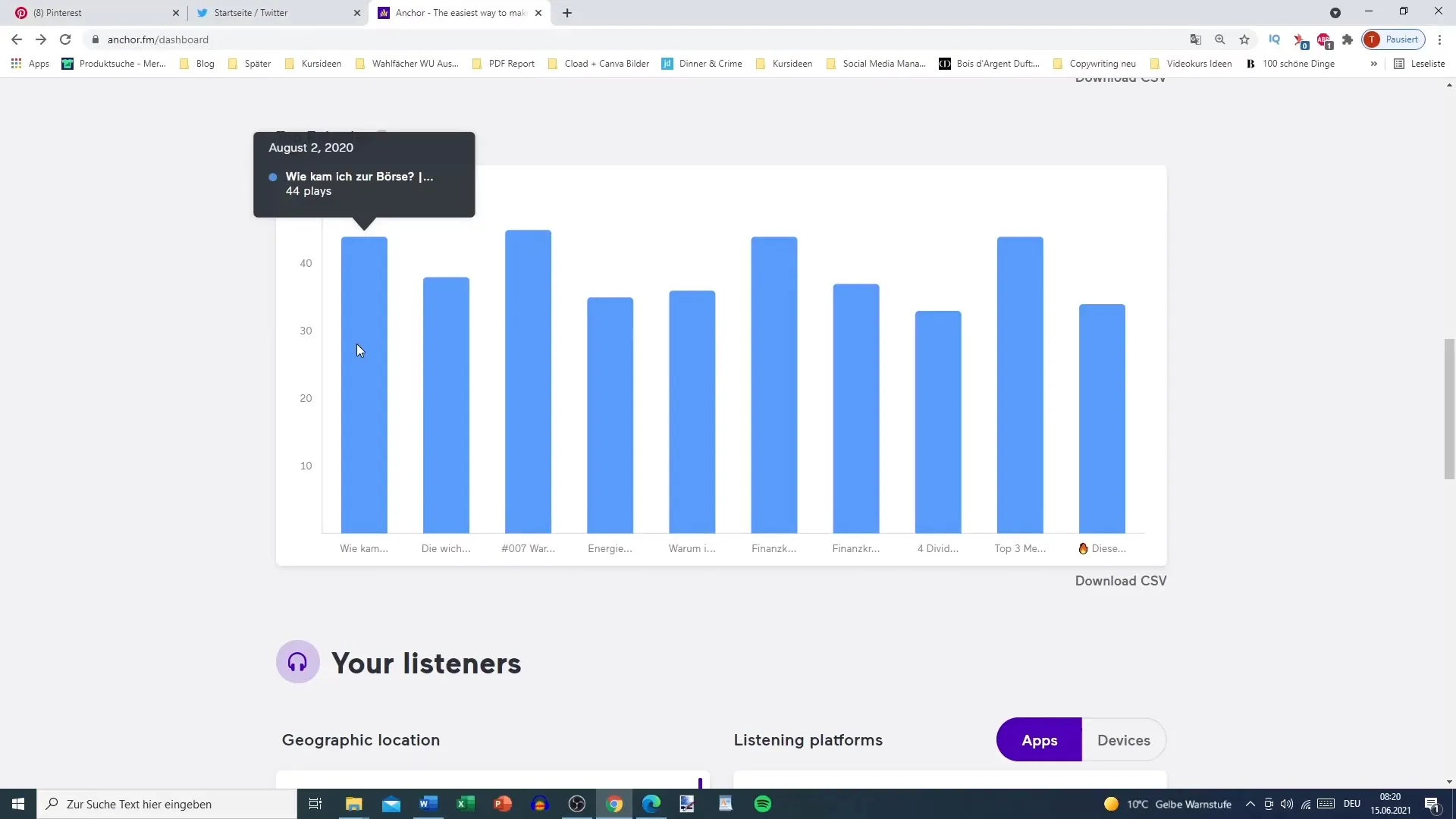
Step 7: Analyzing Geographical Data and Audience Statistics
Another important aspect is the geographical data of your listeners. You can see which countries or cities most of your listeners come from. This provides insights into market reach and potential audience expansions.
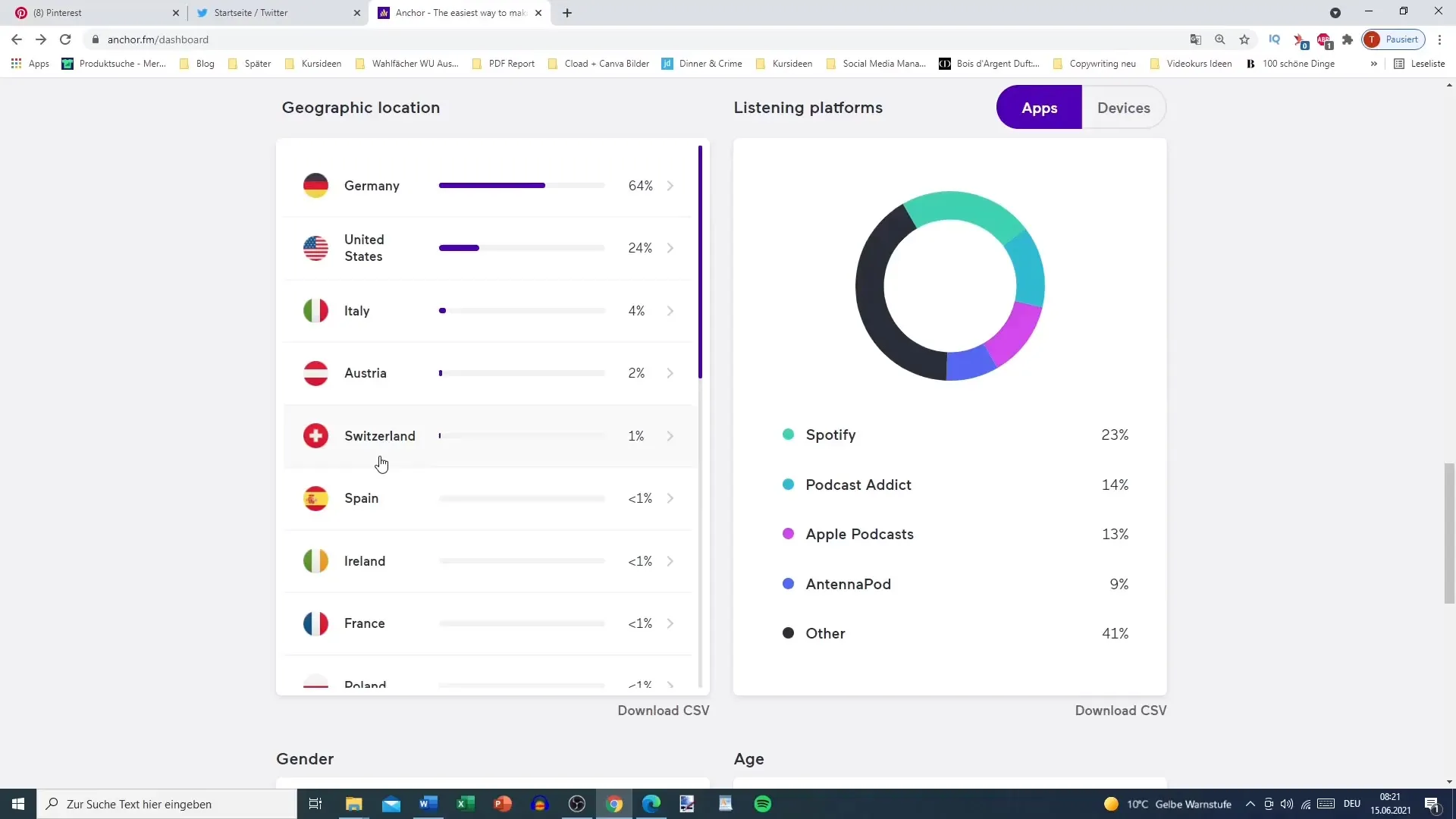
Step 8: Checking Platforms and Devices
In the analytics, you can also see which platforms and devices your audience uses to consume your content. This information helps you understand whether you need to adjust your publishing strategy or content.
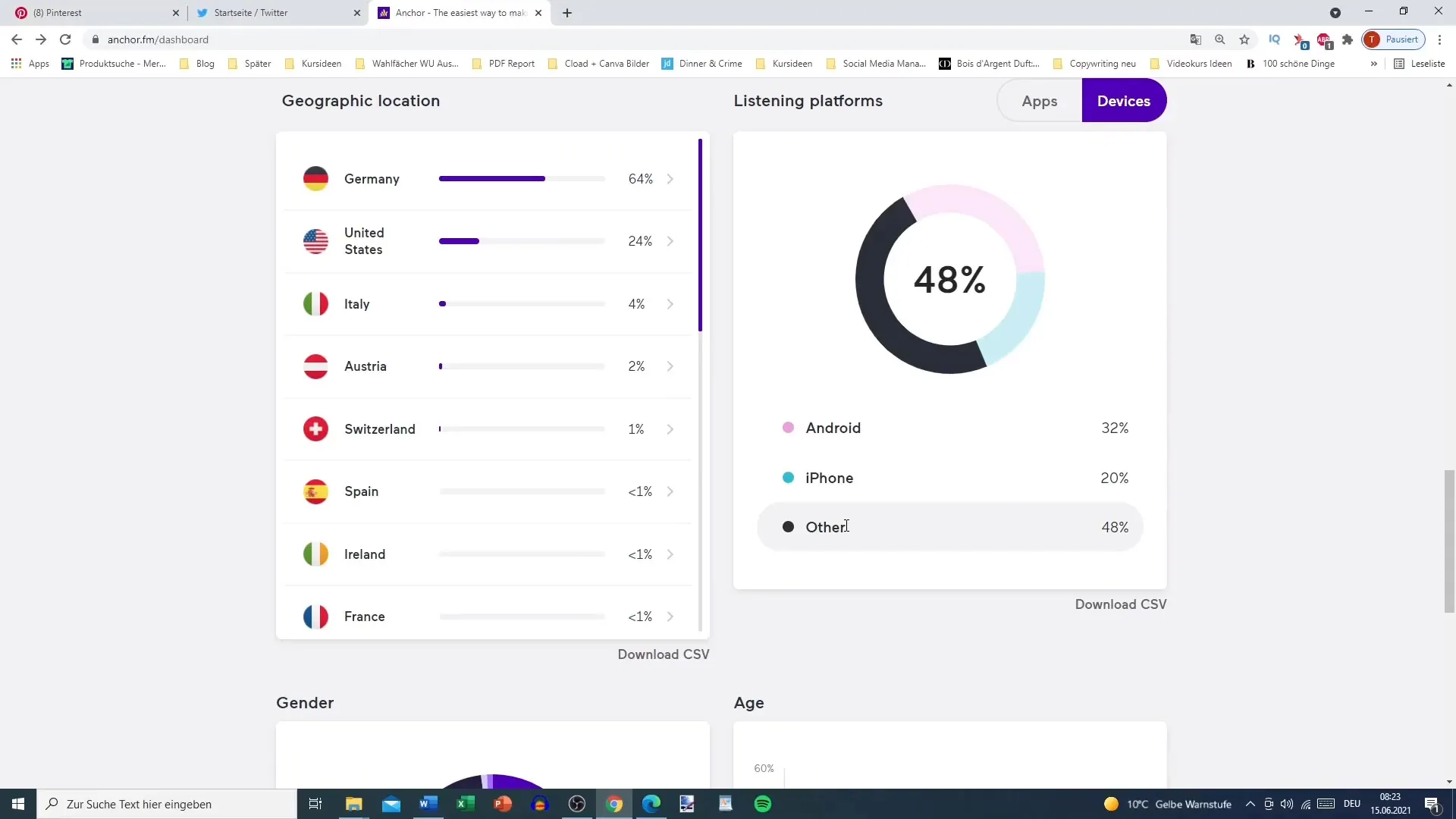
Step 9: Evaluating Demographic Data
Analyzing demographic data such as the gender and age of your audience allows you to tailor your content. This information is valuable for better understanding the interests and needs of your target audience.
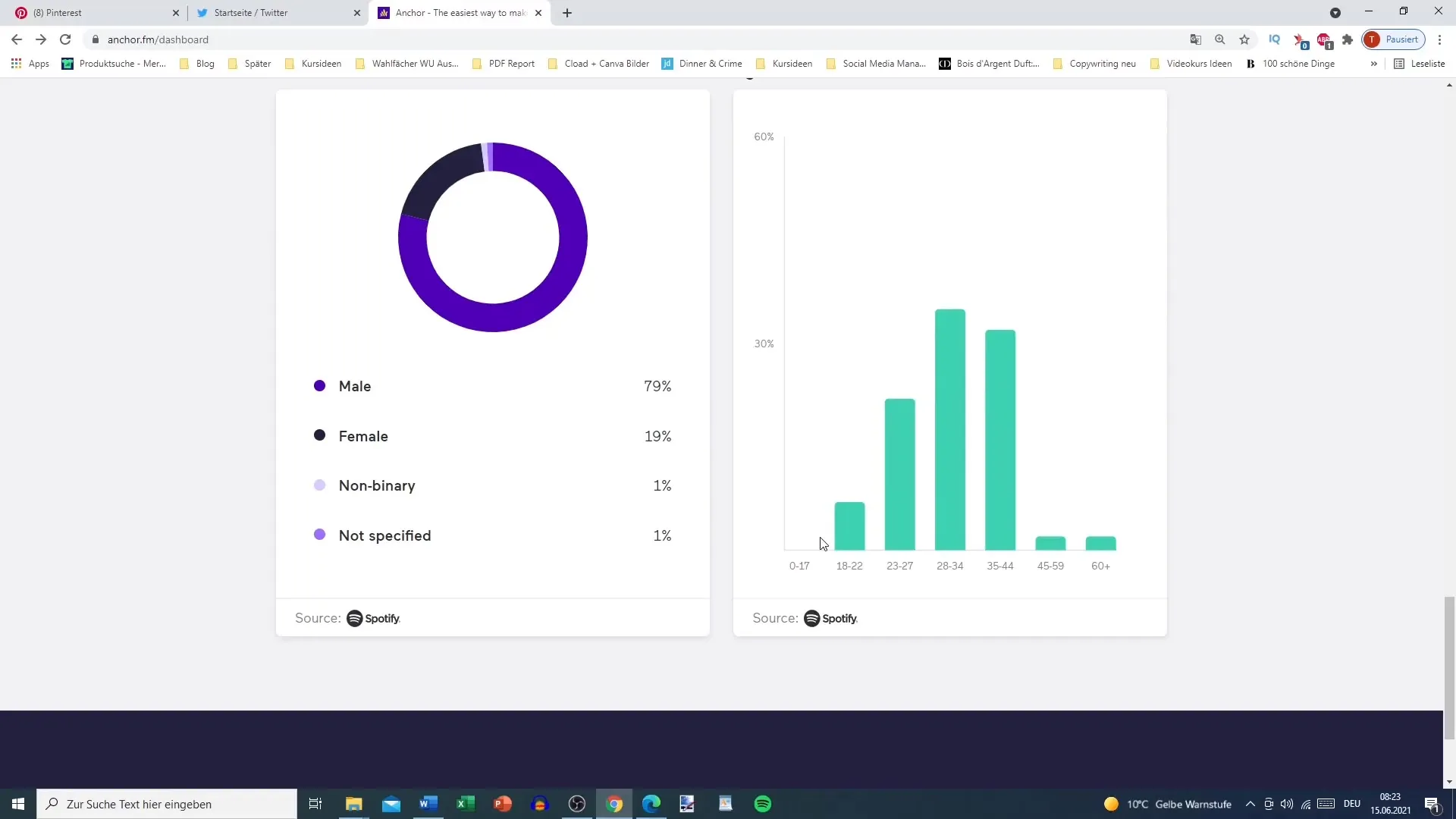
Step 10: Evaluate statistics critically
Be cautious when interpreting the statistics. Some data may not be complete or accurate. Consider that 48% of the activities may not be measurable. Use analytics as a guide, but do not rely solely on them.
Summary
Using podcast analytics is essential for the success of your podcast. You should regularly review the statistics to gain insights into your audience, adjust your content strategy, and effectively expand your reach. Despite the valuable information provided by analytics, never lose sight of the big picture.
Frequently Asked Questions
What are podcast analytics?Podcast analytics are metrics that help you analyze the listening behavior of your audience and evaluate the performance of your podcast.
How often should I review my podcast analytics?It is recommended to review your analytics at least once a month to identify trends and adjust your strategy accordingly.
Which platforms are better for publishing my podcast?It is important to publish your podcast on multiple platforms like Spotify, Apple Podcasts, and others to achieve a broader reach.
What can I do if my listener numbers are stagnant?Analyze your content, gather feedback from listeners, and use analytics to understand which topics are not well-received.
How important are demographic data?Demographic data help you better align your content and marketing strategies to target your audience more effectively.


